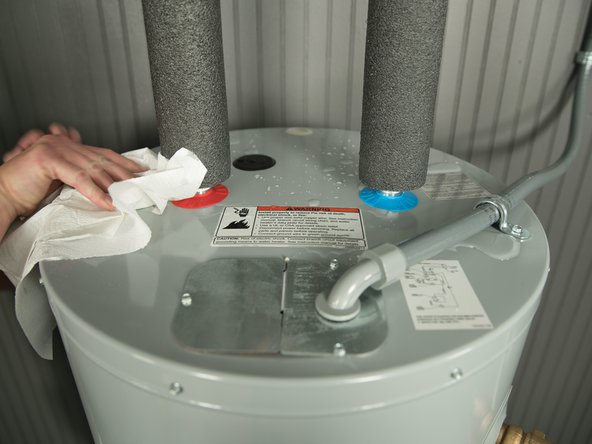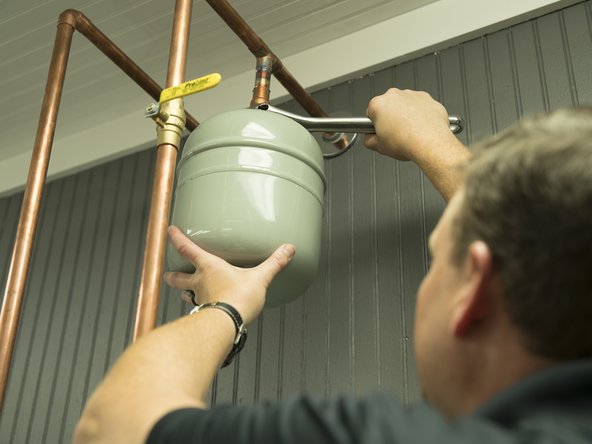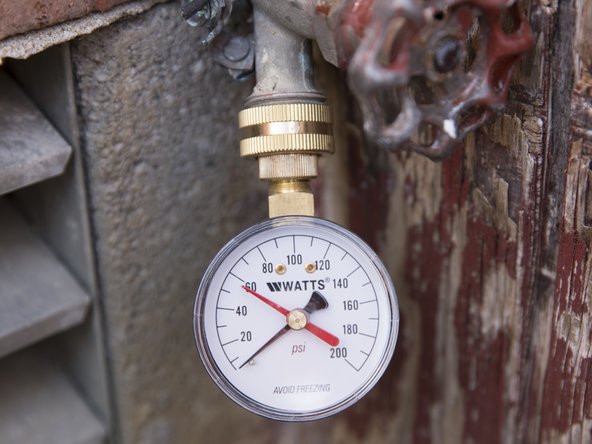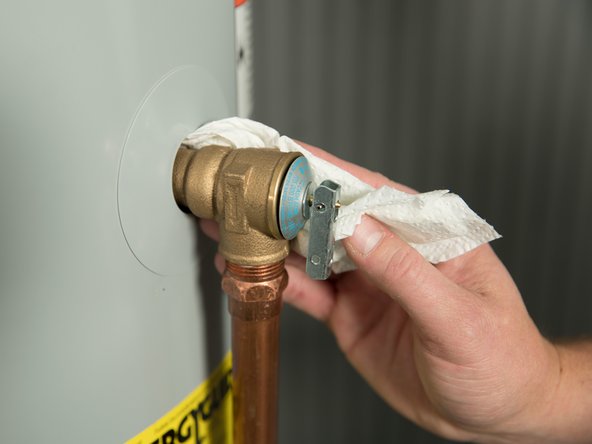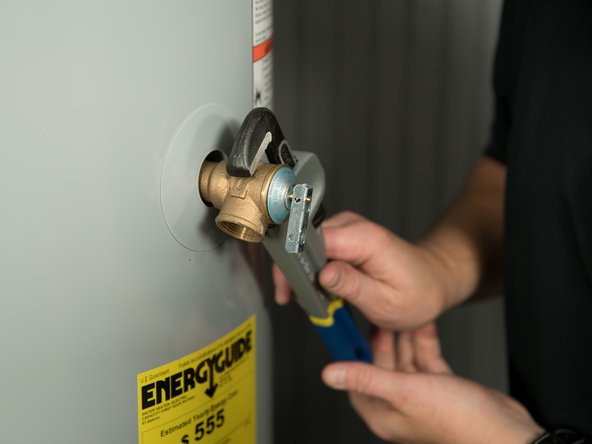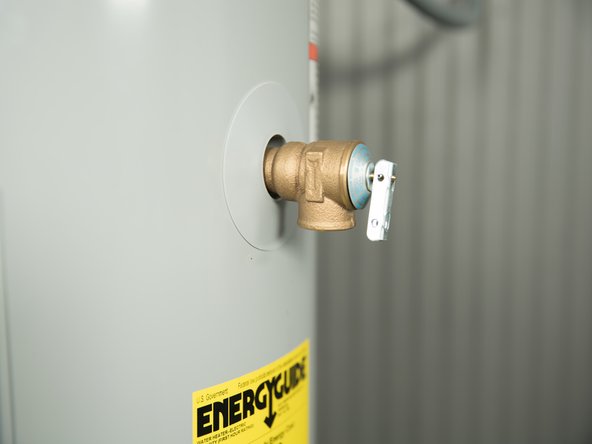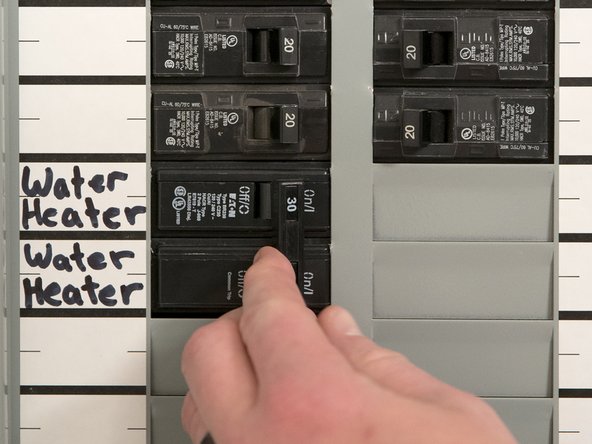Introduction
The information on this web site is supplemental to the printed instructions that came with your water heater. To reduce the risk of property damage, serious injury or death, read and follow all labels on the water heater and the safety instructions in the printed owner's manual.
-
-
Pipe joint compound or plumber's tape
-
Shop rags or paper towels
-
Water pressure gauge with a lazy hand
-
Wrench
-
Pressure reducing valve
-
Thermal expansion tank
-
-
-
Locate the water heater's circuit breaker and turn it OFF (or remove the circuit's fuses).
-
WARNING! Before working on the water heater, use a non-contact circuit tester or volt meter to make sure power is off. Working on an energized appliance can cause electrical burns, electrocution or death.
-
-
-
To more easily identify where a leak is coming from, dry up any drips using paper towels.
-
-
-
Remove the insulation from the water pipes, if present.
-
-
-
Using a fresh, dry paper towel, press the paper towel against the inlet and outlet connections and check for water droplets or moisture.
-
-
-
If the paper towel gets wet, try tightening the connection.
-
-
-
Be sure to turn water OFF before doing this step.
-
In some cases, you may have to remove the threaded connection.
-
-
-
Clean the threads and gaskets.
-
-
-
Reapply pipe joint compound or plumber's tape, if used.
-
-
-
Replace the threaded connection and re-tighten.
-
-
-
Drips coming from the T&P discharge pipe almost always mean the home's water pressure is too high or a thermal expansion tank is needed or both.
-
-
-
A Thermal Expansion Tank is often needed to stop drips from the T&P valve.
-
Replacing the T&P valve almost never stops the drips because T&P valves rarely fail and almost all drips from the T&P valve are due to high water pressure and/or thermal expansion.
-
See Maintenance section for information about Pressure Reducing Valves and Thermal Expansion Tanks.
-
-
-
High water pressure is one of the main reasons water heaters leak prematurely.
-
Plumbing codes require that your home's water pressure be 80 pounds per square inch (psi) or less. Most experts recommend 50-60 psi.
-
If your old water heater leaked prematurely, check your home's water pressure with a pressure gauge with a lazy hand (available at hardware stores and home centers for a few dollars). Measure the water pressure over a 24-hour period. (Water pressures are highest at night.)
-
-
-
Plumbing codes require that your home's water pressure be no higher than 80 psi. If your water pressure exceeds 80 psi, install a Pressure Reducing Valve.
-
Pressure Reducing Valves are adjustable. Most experts recommend setting the Pressure Reducing Valve to 50 - 60 psi.
-
Controlling high water pressure helps protect your water heater, toilet valves, washing machine hoses, and the electronic valves on washing machines, dishwashers, ice makers and other appliances.
-
-
-
There are several threaded connection points on the water heater such as the T&P valve and the drain valve.
-
Use a dry paper towel to determine the source of the leak.
-
-
-
Before removing the threaded connection, be sure to drain the tank. See Draining and Flushing in the Maintenance section.
-
In most cases, a leaking threaded connection will have to be removed and pipe joint compound reapplied in order to stop the drips.
-
-
-
Once the source of the leak has been found and fixed, make sure tank is completely full of water. Turn power ON.
-
It is extremely rare for a new water heater tank to leak. "Leaks" involving a new water heater are almost always from threaded connections or the home's plumbing pipes.
-







